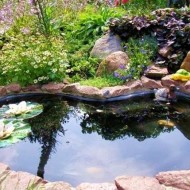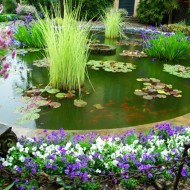A garden oasis at no extra cost with a plastic pond
Content
Advantages of ready-made polymer forms
Dug-in pond molds have a number of important advantages:
- ease and simplicity of installation - special skills are not required to create such a pond;
- environmental friendliness - you can even breed fish in large forms;
- unpretentious care;
- long service life;
- if necessary, the reservoir can be easily dismantled.
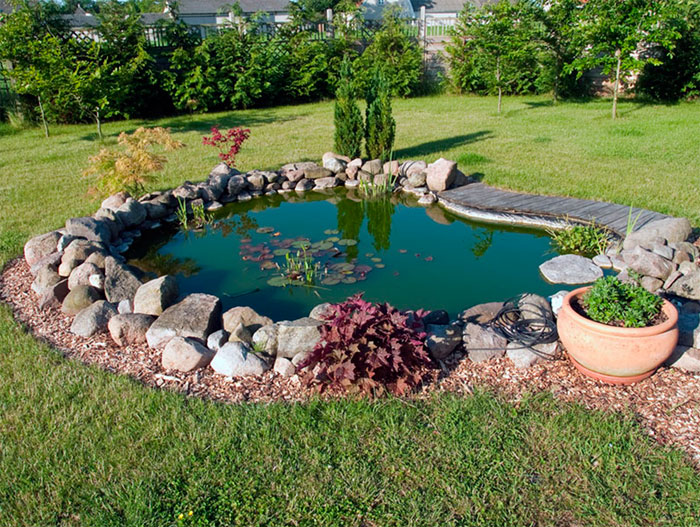
Thanks to the huge number of models, you can choose the option that is ideal for the site.
Video "Installation of a decorative pond"
The video clearly demonstrates the process of installing a polymer mold for a pond.
Varieties
Ready-made frames for reservoirs are made from the following materials:
- Polyethylene. Usually these are small and inexpensive models with a capacity of up to 900 liters. Such a product requires careful transportation - it may crack due to impact. The bottom of the pit for installation must be perfectly flat. Cracks cannot be repaired. Serves up to 10 years.
- Polypropylene. Durable and flexible material resistant to damage and temperature extremes. Possesses high waterproofing properties. Service life - up to 20 years.
- Fiberglass. The most durable material, can last up to 30 years. Lightweight, UV resistant. Cracks that appear can be repaired with a special compound.
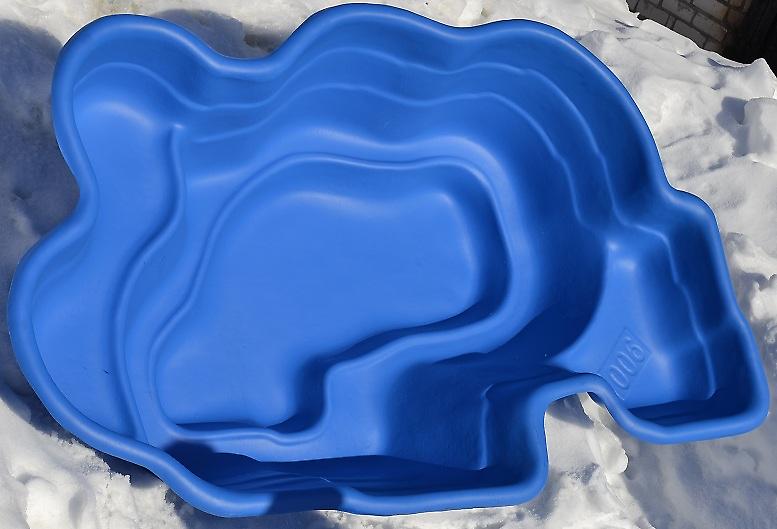
In addition to the material of manufacture, the frames differ in shape. It can be correct, for example, in the form of a circle or rectangle, as well as asymmetric, imitating the uneven banks of a natural reservoir.
How to choose
First of all, determine the size of the future reservoir. To do this, select a place for it in advance - quite picturesque, even, well-lit, without slopes and irregularities. Please note that the ponds look especially beautiful as part of various compositions - next to gazebos, alpine slides, garden hearths, etc. Measure the selected space to know what shape will fit there.
If you intend to breed fish, choose deep options: at least 1.5 m for carps and crucians, 2–2.5 m for trout or sturgeon.
If the dacha or the adjoining territory is decorated in a classical style with strict lines, it makes sense to dwell on a round frame. In most other cases, uneven, "natural" shapes look more appropriate. If you intend to place the pond next to an already installed object, make sure that the selected frame fits well into the designated place, for example, it will "wrap around" a small rock garden.
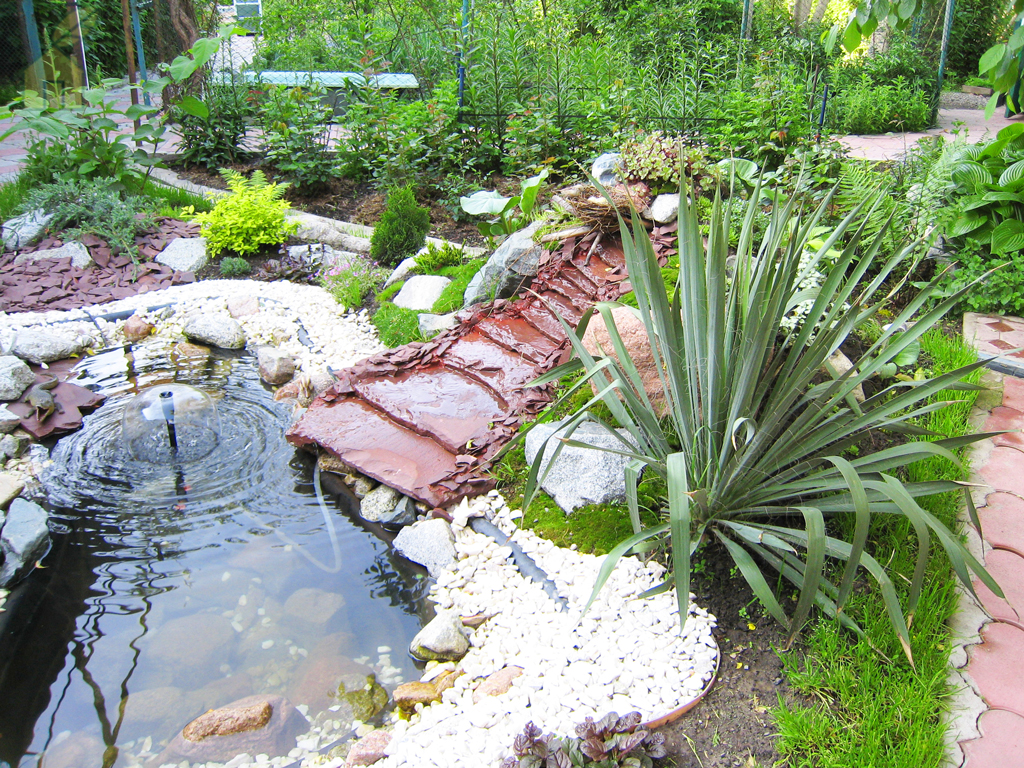
Installation
To install the selected container, do the following:
- Make the markup. It should follow the contour of the form, but be 15–20 cm larger than it. In the same way, you should mark the outlines of different levels of depth, if any.
- Dig a trench to the depth of the mold plus 10-15 cm. To create small ponds, you can use a simple shovel, for large-scale ones, it is better to order special equipment.
- At the bottom of the pit, pour a layer of sand 2–5 cm. Thoroughly level it, spill it with water and tamp it. For large fiberglass molds, a concrete screed up to 7 cm is required.
- Lower the container into the hole, secure it with wooden supports and fill it about a third with water.
- Check form stability. If everything is in order, remove the supports one by one and fill the space between the frame and the soil with sand. Along the way, fill the mold with water to equalize the internal and external pressure on the walls. Pour and tamp the sand.
Leave the mold for 2-3 days so that the sand finally subsides. Top it up if voids appear.
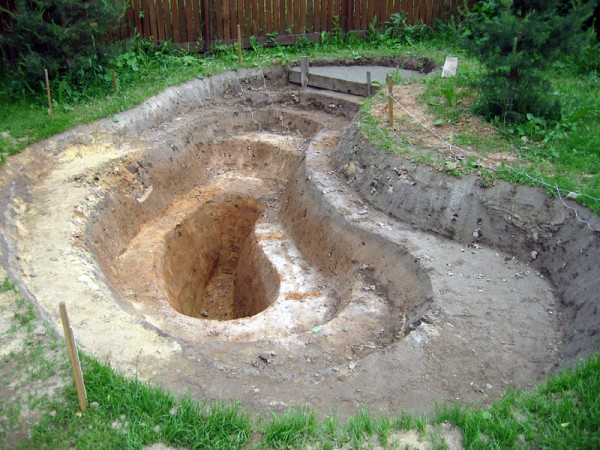
Do not put a film under the frame - it will accumulate condensation, which will subsequently lead to deformation of the bottom.
Decor
You can decorate the pond with natural stones laid out on the shore. Choose not too large, proportional to the size of the reservoir. Make sure that they are firmly in place and cannot fall, damaging the walls. For the smallest ponds it is better to use gravel, for medium ones choose flagstone or small rounded stones. For large bodies of water, coil cobblestones can be used.
You can also place decorative garden figures on the shore: frogs, birds, miniature bridges, etc.
Backlit ponds look very beautiful. For them, you should purchase a special moisture-proof technique. Convenient models with light sensors that automatically turn on in the evening.
In the reservoir itself, you can install a fountain, which requires a special pump.
For planting near the pond, you should select low moisture-loving plants:
- host;
- sedge;
- lightning;
- fern;
- astilba.
Avoid planting trees nearby - as they grow, their roots can damage the plastic.
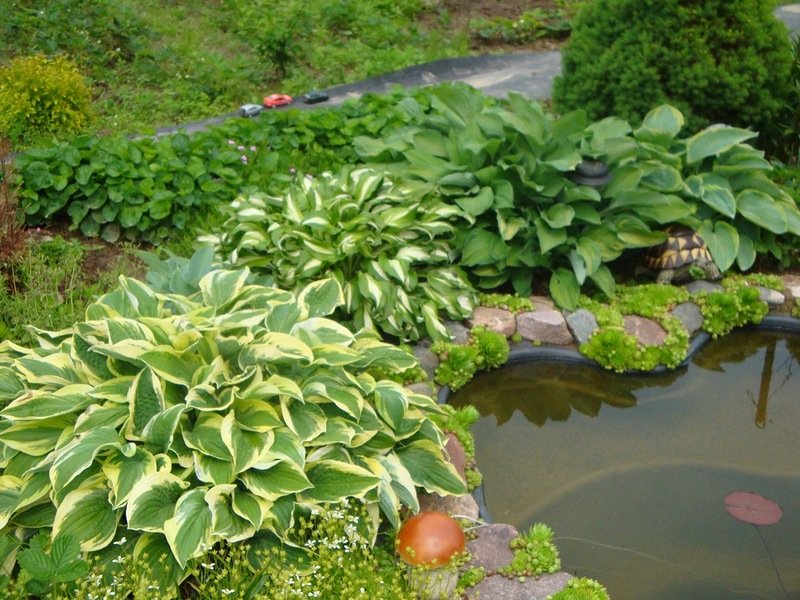
There should be few aquatic plants - they tend to grow rapidly and can turn a pond into a swamp. The following options are popular:
- water lilies;
- water hawthorn;
- water paint;
- azolla.
Plants that need soil (such as water lilies) are planted in special containers.
Finally, fish can be launched into the pond. Depending on the species, they are bred for food or for decorative purposes.
In the second case, the best choice would be koi - carp with a bright color, specially bred for artificial reservoirs. They are clearly visible from the shore, moreover, they quickly tame and begin to swim up to people for food. Some individuals even allow themselves to be stroked. In order for koi to take root and not die in winter, the depth of the pond must be at least 2 m. The size of these fish ranges from 45 to 90 cm. They can live up to 30 years.
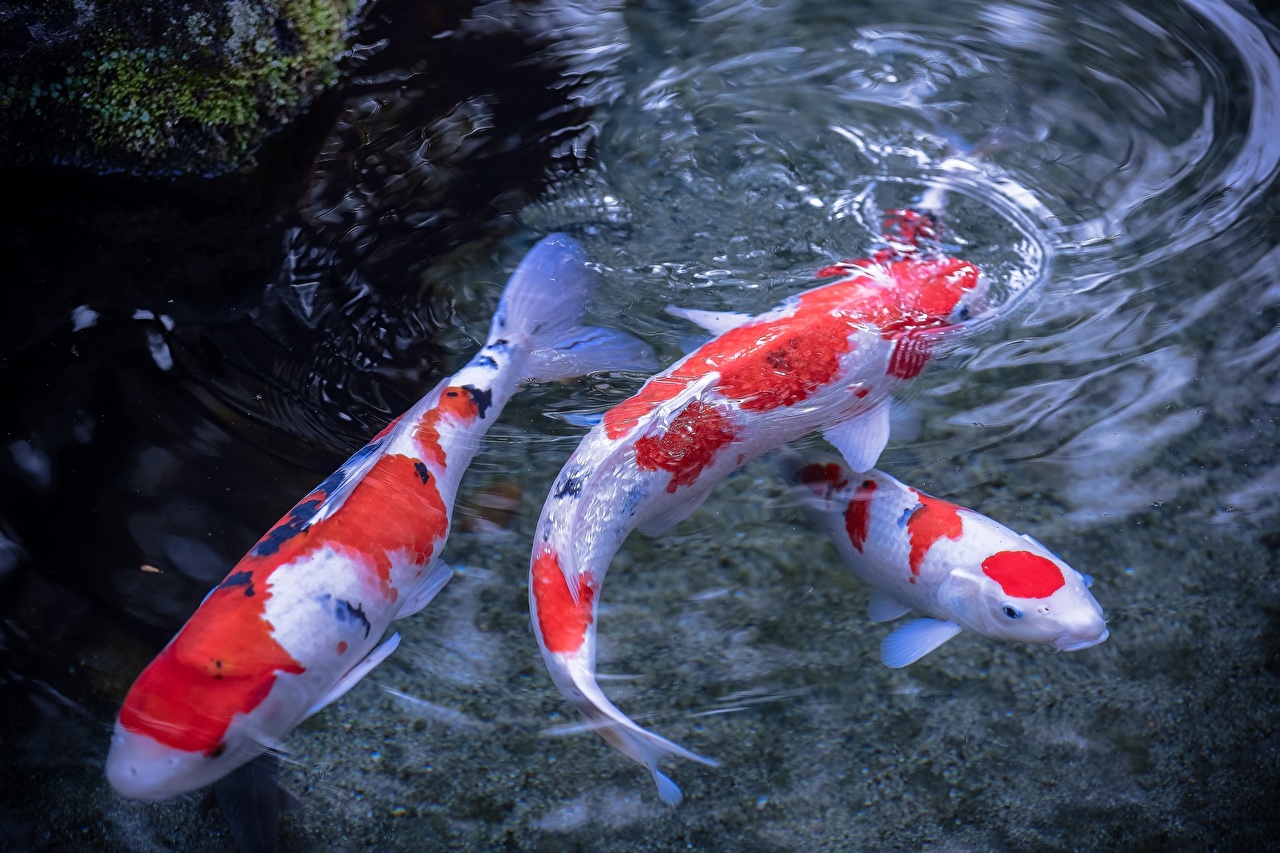
In a small pond (but not less than 50 cm deep) goldfish will look better. They need to be taken to a home aquarium for the winter.
If you intend to keep fish, an aerator must be installed in the pond to saturate the water with oxygen.
Care rules
It is advisable to install a purification system with a pump in the reservoir. The excess algae is removed with a net. If the water is heavily contaminated, it must be drained and the plastic cleaned with brushes.
Remove fallen leaves from the surface in autumn.
To equip a miniature pond, it is not necessary to use a purchased frame, you can do with improvised means, for example, dig a trough or a large basin into the ground.
Prepare the pit correctly for installation, carefully consider all the decor elements, and your pond will become an exquisite and atmospheric garden decoration.

